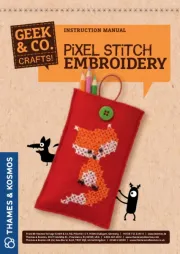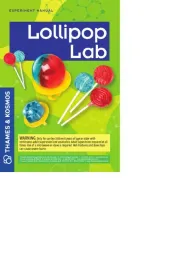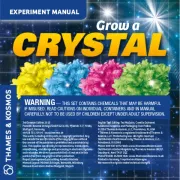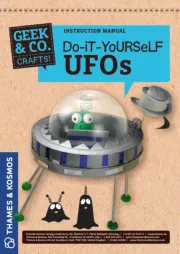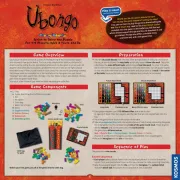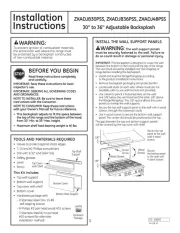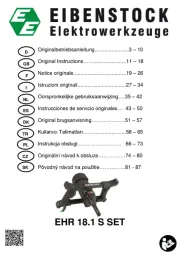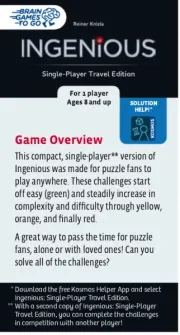
Example:
-> Each player takes a look at his or her own puzzle board and, from his or her supply of
12 tiles, selects the tiles shown next to the symbol rolled, as fast as he or she can.
-> As soon as you have found the required tiles, you try to fit the tiles exactly into the
light-colored placement area of your puzzle board. This means that the area must be
covered completely — the tiles may not protrude laterally. To this end, you may rotate
and flip the tiles over.
Example:
-> As soon as one of the players has completed his or her task, he or she shouts “Ubongo!”
-> The other players continue trying to complete their tasks before the hourglass runs
out.
-> As soon as one of the players notices that the hourglass has run out, he or she shouts
“Stop,” and all players must immediately stop.
Second-Chance Round
The hourglass has run out and nobody was able to complete his or her task? In this case,
a second-chance round takes place. Flip the hourglass again and continue trying to cover
your placement area.
If the previous situation repeats — i.e., nobody can cover his or her placement area
before the hourglass runs out again — the round comes to an end.
Rewards
Each player who completed his or her task receives a reward:
1. The fastest player to fit the tiles exactly into his or her
placement area and shout “Ubongo!” takes one blue sapphire
from the game round track. In addition, he or she randomly
takes one gem from the bag.
2. The second fastest player receives one brown amber from the
game round track. In addition, he or she randomly takes one
gem from the bag.
3. The third fastest player randomly takes one gem from the bag.
4. The fourth fastest player randomly takes one gem from the bag.
Regrettably, all players who couldn’t completely cover their placement areas before the
hourglass ran out get nothing in this round.
End of the Round
The rows of nine sapphires and nine ambers also serve as a round counter.
At the end of each round, the rows must contain exactly one blue sapphire and one
brown amber fewer than when the round started.
However, it may happen that only one or none of the players completes his or her task
before the hourglass runs out, in which case the number of gems on the track must be
reduced accordingly at the end of the round.
If only one player was able to fit the tiles exactly into his or her placement area, the
brown amber representing this round must be removed and tossed into the bag.
If none of the players were able to complete the task, both the blue sapphire and the
brown amber representing this round are removed and tossed into the bag.
At the end of the round, put all of the puzzle boards used in the round on the top of a
shared discard pile.
New Round
Each player takes a new puzzle board from the unused stack.
The players take turns rolling the die and flipping the hourglass at the start of each round.
The die is rolled and the hourglass is flipped by the player to the left of the player who
rolled the die in the previous round.
End of the Game
The game ends after nine rounds — that is, when no more gems are left on the game
round track.
Each player adds up the values of the gems he or she has collected.
You win the game if you have the most points.
If various players tie for the highest score, a “playoff” takes place. Each tying player takes
a puzzle board. One of the players rolls the die. The hourglass is not used. The first player
to complete the task wins the whole game!
Example:
At the end of the game, one of the players has
one red ruby, one blue sapphire, three green emeralds,
and three brown ambers. Therefore, he has earned
1 x 4 + 1 x 3 + 3 x 2 + 3 x 1 = 16 points
Solo Variant
If you want to play Ubongo by yourself, you need a clock or stopwatch.
Note: The Play Smarter app also includes a solo game timer!
Try to complete as many tasks as possible within five (or 10, or 20) minutes.
Another solo variant consists in measuring the time you need to complete five (or 10, or
20) tasks.
If you get stuck in your task, you can put it aside and draw a new puzzle board.
Write your results down and try to establish a new record each time you play.
Game Designer:
Grzegorz Rejchtman, born in 1970 in Poland, lives in
Monaco. A computer science and economics graduate, he
prefers games that are fast to learn, communicative, and fun.
He has published many games in Scandinavia and worldwide.
Grzegorz Rejchtman and KOSMOS thank all of the play-testers
and all the people who reviewed the game rules.
Art: Bernd Wagenfeld, Karl Homes, Nicolas Neubauer
Graphic Design: SENSiT Communication, München
Editorial Team: Bärbel Schmidts, Markus Reichert,
Ralph Querfurth
English Translation: Gavin Allister
English Text Editing: Ted McGuire
Additional Design: Dan Freitas
© 2015 Franckh-Kosmos Verlags-GmbH & Co. KG
Pfizerstr. 5-7, D-70184 Stuttgart, Germany.
© 2015 Thames & Kosmos, LLC, Providence, RI, USA
Thames & Kosmos® is a registered trademark of
Thames & Kosmos, LLC.
Distributed in North America by Thames & Kosmos, LLC.
Providence, RI 02903
Phone: 800-587-2872; Web: www.thamesandkosmos.com
Distributed in United Kingdom by Thames & Kosmos UK,
LP. Goudhurst, Kent TN17 2QZ
Phone: 01580 212000; Web: www.thamesandkosmos.co.uk
Printed in Germany / Imprimé en Allemagne
2


